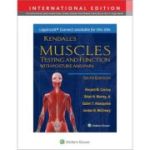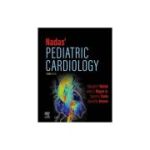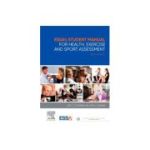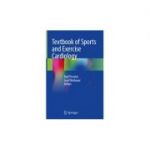Physiology of Sport and Exercise

Price: 703,50 lei
Availability: upon order
Author: W. Larry Kenney Jack Wilmore David Costill
ISBN: 9781492572299
Publisher: Human Kinetics
Publishing Year: 2020
Edition: 7
Pages: 648
Category: SPORTS MEDICINE
DESCRIPTION
Physiology of Sport and Exercise, Seventh Edition With Web Study Guide, continues its legacy as a top physiology textbook and favorite of instructors and students alike. Combining research with extensive visual aids, this resource offers a simple way for students to develop an understanding of the body’s abilities to perform various types and intensities of exercise and sport, to adapt to stressful situations, and to improve its physiological capacities.
Written by a team of distinguished researchers, all past presidents of the American College of Sports Medicine, this seventh edition has been updated based on the most recent position stands, standards, and guidelines in the field of sport and exercise physiology. Throughout the text, updated photos join with the superb illustrations and medical artwork to clarify difficult concepts and illustrate how the body performs. Digital components found in the web study guide now include 26 animations that offer a dynamic way to experience physiological concepts, and 66 audio clips that provide explanations of complex physiological processes to aid students’ understanding of important illustrations in the text. Leaders in the field discuss recent developments and real-world applications in 27 video clips to help students connect theoretical and practical concepts. Corresponding icons throughout the text notify students when digital elements are available to complement the materials.
In addition to the expanded digital components, Physiology of Sport and Exercise, Seventh Edition, features new and updated content based on the latest research in the field:
Focus of Exercise and Sport Physiology
Acute and Chronic Responses to Exercise
The Evolution of Exercise Physiology
Exercise Physiology in the 21st Century
Research: The Foundation for Understanding
Part I. Exercising Muscle
Chapter 1. Structure and Function of Exercising Muscle
Anatomy of Skeletal Muscle
Muscle Fiber Contraction
Muscle Fiber Types
Skeletal Muscle and Exercise
Chapter 2. Fuel for Exercise: Bioenergetics and Muscle Metabolism
Energy Substrates
Controlling the Rate of Energy Production
Storing Energy: High-Energy Phosphates
The Basic Energy Systems
Interaction of the Energy Systems
The Crossover Concept
The Oxidative Capacity of Muscle
Chapter 3. Neural Control of Exercising Muscle
Structure and Function of the Nervous System
Central Nervous System
Peripheral Nervous System
Sensory-Motor Integration
Chapter 4. Hormonal Control During Exercise
The Endocrine System
Endocrine Glands and Their Hormones: An Overview
Hormonal Regulation of Metabolism During Exercise
Hormonal Regulation of Fluid and Electrolytes During Exercise
Hormonal Regulation of Caloric Intake
Chapter 5. Energy Expenditure, Fatigue, and Muscle Soreness
Measuring Energy Expenditure
Energy Expenditure at Rest and During Exercise
Fatigue and Its Causes
Critical Power: The Link Between Energy Expenditure and Fatigue
Muscle Soreness and Muscle Cramps
Part II. Cardiovascular and Respiratory Function
Chapter 6. The Cardiovascular System and Its Control
The Heart
Vascular System
Blood
Chapter 7. The Respiratory System and Its Regulation
Pulmonary Ventilation
Pulmonary Volumes
Pulmonary Diffusion
Transport of Oxygen and Carbon Dioxide in the Blood
Gas Exchange at the Muscles
Regulation of Pulmonary Ventilation
Afferent Feedback From Exercising Limbs
Chapter 8. Cardiorespiratory Responses to Acute Exercise
Cardiovascular Responses to Acute Exercise
Respiratory Responses to Acute Exercise
Part III. Exercise Training
Chapter 9. Principles of Exercise Training
Terminology
General Principles of Training
Resistance Training Programs
Anaerobic and Aerobic Power Training Programs
Chapter 10. Adaptations to Resistance Training
Resistance Training and Gains in Muscular Fitness
Mechanisms of Gains in Muscle Strength
Interaction Between Resistance Training and Diet
Resistance Training for Special Populations
Chapter 11. Adaptations to Aerobic and Anaerobic Training
Adaptations to Aerobic Training
Adaptations to Anaerobic Training
Adaptations to High-Intensity Interval Training
Specificity of Training and Cross-Training
Part IV. Environmental Influences on Performance
Chapter 12. Exercise in Hot and Cold Environments
Body Temperature Regulation
Physiological Responses to Exercise in the Heat
Health Risks During Exercise in the Heat
Acclimation to Exercise in the Heat
Exercise in the Cold
Physiological Responses to Exercise in the Cold
Health Risks During Exercise in the Cold
Chapter 13. Exercise at Altitude
Environmental Conditions at Altitude
Physiological Responses to Acute Altitude Exposure
Exercise and Sport Performance at Altitude
Acclimation: Chronic Exposure to Altitude
Altitude: Optimizing Training and Performance
Health Risks of Acute Exposure to Altitude
Part V. Optimizing Performance in Sport
Chapter 14. Training for Sport
Optimizing Training
Periodization of Training
Overtraining
Tapering for Peak Performance
Detraining
Chapter 15. Body Composition and Nutrition for Sport
Assessing Body Composition
Body Composition, Weight, and Sport Performance
Classification of Nutrients
Water and Electrolyte Balance
Nutrition and Athletic Performance
Chapter 16. Ergogenic Aids in Sport
Researching Ergogenic Aids
Nutritional Ergogenic Aids
Anti-Doping Codes and Drug Testing
Prohibited Substances and Techniques
Part VI. Age and Sex Considerations in Sport and Exercise
Chapter 17. Children and Adolescents in Sport and Exercise
Growth, Development, and Maturation
Physiological Responses to Acute Exercise
Physiological Adaptations to Exercise Training
Physical Activity Patterns Among Youth
Sport Performance and Specialization
Special Issues
Chapter 18. Aging in Sport and Exercise
Height, Weight, and Body Composition
Physiological Responses to Acute Exercise
Physiological Adaptations to Exercise Training
Sport Performance
Special Issues
Chapter 19. Sex Differences in Sport and Exercise
Sex Versus Gender in Exercise Physiology
Body Size and Composition
Physiological Responses to Acute Exercise
Physiological Adaptations to Exercise Training
Sport Performance
Special Issues
Part VII. Physical Activity for Health and Fitness
Chapter 20. Prescription of Exercise for Health and Fitness
Health Benefits of Regular Physical Activity and Exercise
Physical Activity Recommendations
Health Screening
Exercise Prescription
Monitoring Exercise Intensity
Exercise Programming
Exercise and Rehabilitation of People with Diseases
Chapter 21. Cardiovascular Disease and Physical Activity
Prevalence of Cardiovascular Disease
Forms of Cardiovascular Disease
Understanding the Disease Process
Cardiovascular Disease Risk
Reducing Risk Through Physical Activity
Risk of Heart Attack and Death During Exercise
Exercise Training and Rehabilitation of Patients with Heart Disease
Chapter 22. Obesity, Diabetes, and Physical Activity
Understanding Obesity
Weight Loss
Management Guidelines for Overweight and Obesity
Role of Physical Activity in Weight Management and Risk Reduction
Understanding Diabetes
Treatment of Diabetes
Role of Physical Activity in Diabetes
Written by a team of distinguished researchers, all past presidents of the American College of Sports Medicine, this seventh edition has been updated based on the most recent position stands, standards, and guidelines in the field of sport and exercise physiology. Throughout the text, updated photos join with the superb illustrations and medical artwork to clarify difficult concepts and illustrate how the body performs. Digital components found in the web study guide now include 26 animations that offer a dynamic way to experience physiological concepts, and 66 audio clips that provide explanations of complex physiological processes to aid students’ understanding of important illustrations in the text. Leaders in the field discuss recent developments and real-world applications in 27 video clips to help students connect theoretical and practical concepts. Corresponding icons throughout the text notify students when digital elements are available to complement the materials.
In addition to the expanded digital components, Physiology of Sport and Exercise, Seventh Edition, features new and updated content based on the latest research in the field:
- Additional information on overtraining and exercise addiction
- Expanded content on fatigue and mobility in aging
- New sections on epigenetics, bioinformatics, and neuromuscular function
- New information on exercise genomics
- New Research Perspectives emphasizing emerging findings in the field, and a new Research Perspectives Finder to help students locate key content quickly
Ease of reading has been the standout feature of this popular text. The seventh edition continues to offer comprehensive coverage of the complex relationship between human physiology and exercise while maintaining an engaging and student-friendly tone. Unique learning features paired with an accessible layout, including chapter-opening outlines and review boxes throughout each chapter, will help students focus on the major concepts addressed. Study questions and a list of key terms at the end of the chapter increase students’ opportunities for recall and self-testing. A comprehensive glossary and lists of common abbreviations and conversions provide easy reference for students as they complete labs and assignments.
To foster an enriched learning experience, both students and instructors can take advantage of the web-based ancillaries that accompany the text. In addition to animations, videos, and audio clips, the web study guide includes comprehension quizzes to provide immediate feedback to students on their knowledge retention as well as end-of-unit mastery checks that students can use for evaluating their progress.
Instructors are provided with access to an instructor guide, test package, ready-to-use chapter quizzes, and a presentation package plus image bank. The presentation package includes PowerPoint slides with key points and content, which can be modified to suit a variety of class structures. An image bank features all of the graphics, artwork, and content photos from the text for easy insertion into tests, quizzes, handouts, and other course materials. Digital extras—composed of the animations, videos, and audio clips that students find in the web study guide—bolster comprehension of challenging concepts.
Physiology of Sport and Exercise has been a pivotal textbook of the engaging field of exercise physiology. Through dynamic and interactive learning activities, easy-to-follow layouts, and research-oriented content enriched with visual supplements, students and instructors will find this an invaluable resource for their continued education.
To foster an enriched learning experience, both students and instructors can take advantage of the web-based ancillaries that accompany the text. In addition to animations, videos, and audio clips, the web study guide includes comprehension quizzes to provide immediate feedback to students on their knowledge retention as well as end-of-unit mastery checks that students can use for evaluating their progress.
Instructors are provided with access to an instructor guide, test package, ready-to-use chapter quizzes, and a presentation package plus image bank. The presentation package includes PowerPoint slides with key points and content, which can be modified to suit a variety of class structures. An image bank features all of the graphics, artwork, and content photos from the text for easy insertion into tests, quizzes, handouts, and other course materials. Digital extras—composed of the animations, videos, and audio clips that students find in the web study guide—bolster comprehension of challenging concepts.
Physiology of Sport and Exercise has been a pivotal textbook of the engaging field of exercise physiology. Through dynamic and interactive learning activities, easy-to-follow layouts, and research-oriented content enriched with visual supplements, students and instructors will find this an invaluable resource for their continued education.
TABLE OF CONTENTS
Introduction. An Introduction to Exercise and Sport PhysiologyFocus of Exercise and Sport Physiology
Acute and Chronic Responses to Exercise
The Evolution of Exercise Physiology
Exercise Physiology in the 21st Century
Research: The Foundation for Understanding
Part I. Exercising Muscle
Chapter 1. Structure and Function of Exercising Muscle
Anatomy of Skeletal Muscle
Muscle Fiber Contraction
Muscle Fiber Types
Skeletal Muscle and Exercise
Chapter 2. Fuel for Exercise: Bioenergetics and Muscle Metabolism
Energy Substrates
Controlling the Rate of Energy Production
Storing Energy: High-Energy Phosphates
The Basic Energy Systems
Interaction of the Energy Systems
The Crossover Concept
The Oxidative Capacity of Muscle
Chapter 3. Neural Control of Exercising Muscle
Structure and Function of the Nervous System
Central Nervous System
Peripheral Nervous System
Sensory-Motor Integration
Chapter 4. Hormonal Control During Exercise
The Endocrine System
Endocrine Glands and Their Hormones: An Overview
Hormonal Regulation of Metabolism During Exercise
Hormonal Regulation of Fluid and Electrolytes During Exercise
Hormonal Regulation of Caloric Intake
Chapter 5. Energy Expenditure, Fatigue, and Muscle Soreness
Measuring Energy Expenditure
Energy Expenditure at Rest and During Exercise
Fatigue and Its Causes
Critical Power: The Link Between Energy Expenditure and Fatigue
Muscle Soreness and Muscle Cramps
Part II. Cardiovascular and Respiratory Function
Chapter 6. The Cardiovascular System and Its Control
The Heart
Vascular System
Blood
Chapter 7. The Respiratory System and Its Regulation
Pulmonary Ventilation
Pulmonary Volumes
Pulmonary Diffusion
Transport of Oxygen and Carbon Dioxide in the Blood
Gas Exchange at the Muscles
Regulation of Pulmonary Ventilation
Afferent Feedback From Exercising Limbs
Chapter 8. Cardiorespiratory Responses to Acute Exercise
Cardiovascular Responses to Acute Exercise
Respiratory Responses to Acute Exercise
Part III. Exercise Training
Chapter 9. Principles of Exercise Training
Terminology
General Principles of Training
Resistance Training Programs
Anaerobic and Aerobic Power Training Programs
Chapter 10. Adaptations to Resistance Training
Resistance Training and Gains in Muscular Fitness
Mechanisms of Gains in Muscle Strength
Interaction Between Resistance Training and Diet
Resistance Training for Special Populations
Chapter 11. Adaptations to Aerobic and Anaerobic Training
Adaptations to Aerobic Training
Adaptations to Anaerobic Training
Adaptations to High-Intensity Interval Training
Specificity of Training and Cross-Training
Part IV. Environmental Influences on Performance
Chapter 12. Exercise in Hot and Cold Environments
Body Temperature Regulation
Physiological Responses to Exercise in the Heat
Health Risks During Exercise in the Heat
Acclimation to Exercise in the Heat
Exercise in the Cold
Physiological Responses to Exercise in the Cold
Health Risks During Exercise in the Cold
Chapter 13. Exercise at Altitude
Environmental Conditions at Altitude
Physiological Responses to Acute Altitude Exposure
Exercise and Sport Performance at Altitude
Acclimation: Chronic Exposure to Altitude
Altitude: Optimizing Training and Performance
Health Risks of Acute Exposure to Altitude
Part V. Optimizing Performance in Sport
Chapter 14. Training for Sport
Optimizing Training
Periodization of Training
Overtraining
Tapering for Peak Performance
Detraining
Chapter 15. Body Composition and Nutrition for Sport
Assessing Body Composition
Body Composition, Weight, and Sport Performance
Classification of Nutrients
Water and Electrolyte Balance
Nutrition and Athletic Performance
Chapter 16. Ergogenic Aids in Sport
Researching Ergogenic Aids
Nutritional Ergogenic Aids
Anti-Doping Codes and Drug Testing
Prohibited Substances and Techniques
Part VI. Age and Sex Considerations in Sport and Exercise
Chapter 17. Children and Adolescents in Sport and Exercise
Growth, Development, and Maturation
Physiological Responses to Acute Exercise
Physiological Adaptations to Exercise Training
Physical Activity Patterns Among Youth
Sport Performance and Specialization
Special Issues
Chapter 18. Aging in Sport and Exercise
Height, Weight, and Body Composition
Physiological Responses to Acute Exercise
Physiological Adaptations to Exercise Training
Sport Performance
Special Issues
Chapter 19. Sex Differences in Sport and Exercise
Sex Versus Gender in Exercise Physiology
Body Size and Composition
Physiological Responses to Acute Exercise
Physiological Adaptations to Exercise Training
Sport Performance
Special Issues
Part VII. Physical Activity for Health and Fitness
Chapter 20. Prescription of Exercise for Health and Fitness
Health Benefits of Regular Physical Activity and Exercise
Physical Activity Recommendations
Health Screening
Exercise Prescription
Monitoring Exercise Intensity
Exercise Programming
Exercise and Rehabilitation of People with Diseases
Chapter 21. Cardiovascular Disease and Physical Activity
Prevalence of Cardiovascular Disease
Forms of Cardiovascular Disease
Understanding the Disease Process
Cardiovascular Disease Risk
Reducing Risk Through Physical Activity
Risk of Heart Attack and Death During Exercise
Exercise Training and Rehabilitation of Patients with Heart Disease
Chapter 22. Obesity, Diabetes, and Physical Activity
Understanding Obesity
Weight Loss
Management Guidelines for Overweight and Obesity
Role of Physical Activity in Weight Management and Risk Reduction
Understanding Diabetes
Treatment of Diabetes
Role of Physical Activity in Diabetes
Book categories
-Special order
-Publishers
-Promo
-Callisto Publications
-New books
-- 441,00 lei
- 1296,75 leiMRP: 1365,00 lei
- 714,00 leiMRP: 840,00 lei
Promotions
-- 292,95 leiMRP: 325,50 lei
- 472,50 leiMRP: 525,00 lei
- 708,75 leiMRP: 787,50 lei












OUR VISITORS OPINIONS